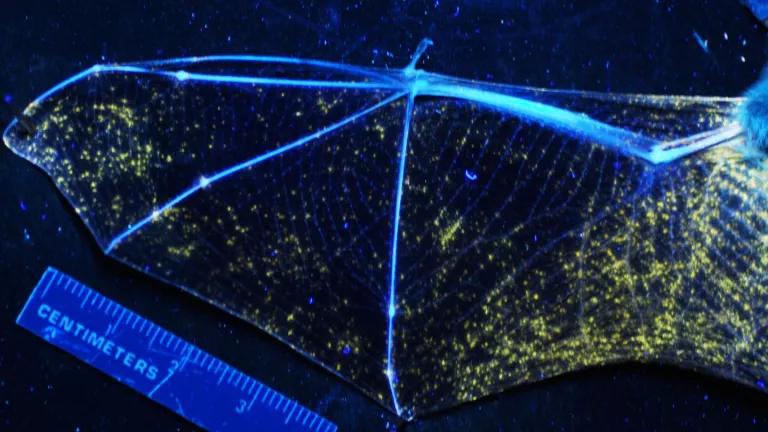The Fungus Amongus
New research sheds light on exactly how white-nose syndrome kills bats.

As we battle the recent cold snap with puffy coats and hot drinks, many species of bats are cozied up in caves, riding out the winter in hibernation. Unfortunately, hibernating bats are especially vulnerable to white-nose syndrome; Psuedogymnoascus destructans—the fungus that causes the disease—thrives under cold, humid conditions (i.e. caves).
A new study is the first to detail just how the fungus claims its victims, from infection to death. Before any external signs of the disease emerge (like the lesions that glow yellow under UV light), the fungus has already begun depleting the bats’ energy stores and triggering life-threatening physiological imbalances.
Since 2006, white-nose syndrome has killed more than five million bats on the continent, with mortality rates of 90 percent to 100 percent in some locations. Now that scientists have a better picture of what’s going on, they might be able to intercede at some point in the fungal attack to halt the epidemic. Until then, many bats will never see another spring.
This article was originally published on onEarth, which is no longer in publication. onEarth was founded in 1979 as the Amicus Journal, an independent magazine of thought and opinion on the environment. All opinions expressed are those of the authors and do not necessarily reflect the policies or positions of NRDC. This article is available for online republication by news media outlets or nonprofits under these conditions: The writer(s) must be credited with a byline; you must note prominently that the article was originally published by NRDC.org and link to the original; the article cannot be edited (beyond simple things such grammar); you can’t resell the article in any form or grant republishing rights to other outlets; you can’t republish our material wholesale or automatically—you need to select articles individually; you can’t republish the photos or graphics on our site without specific permission; you should drop us a note to let us know when you’ve used one of our articles.

Protecting Biodiversity Means Saving the Bogs (and Peatlands, Swamps, Marshes, Fens…)
How to Make an Effective Public Comment
From Dams to DAPL, the Army Corps’ Culture of Disdain for Indigenous Communities Must End